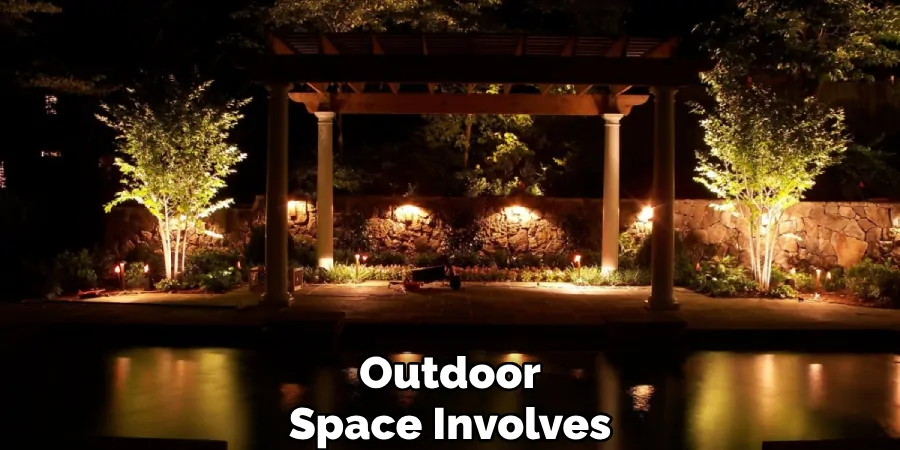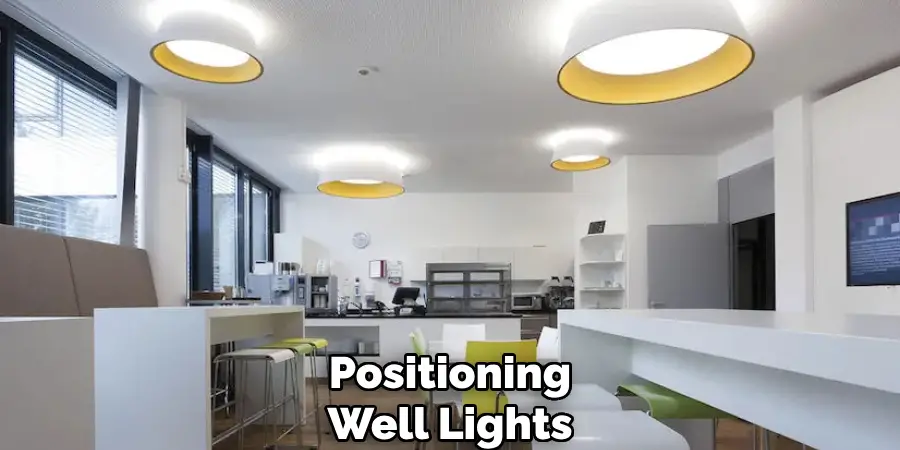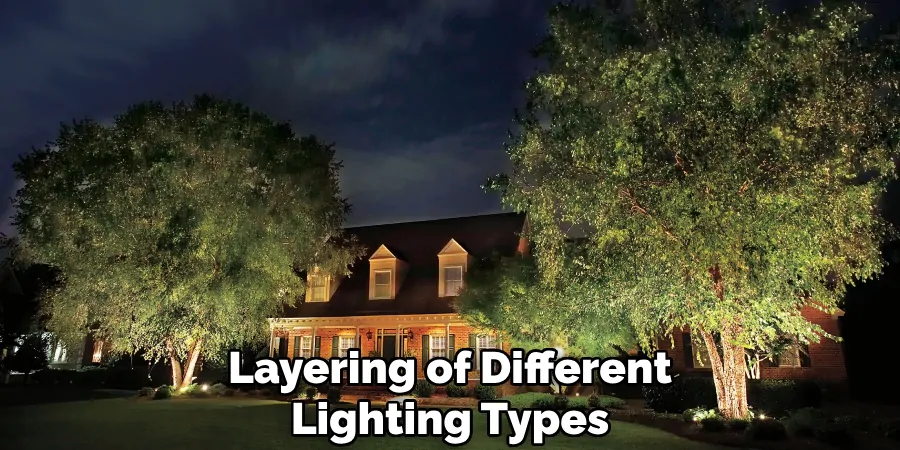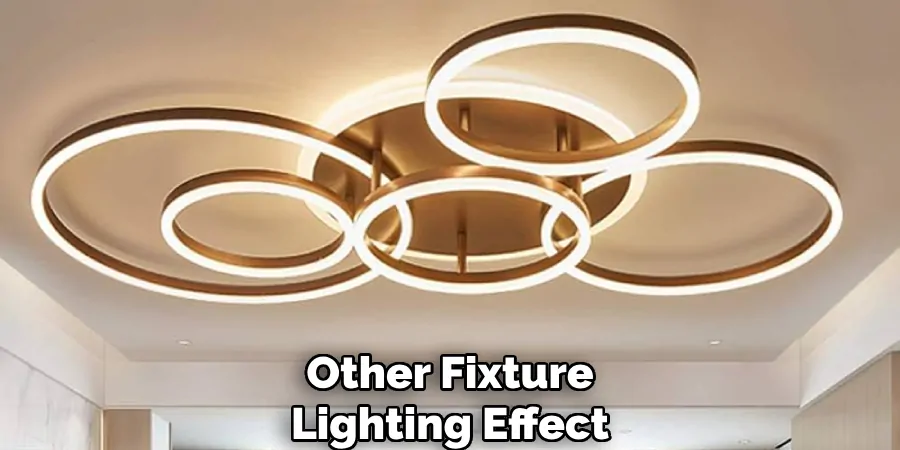Well lights are an innovative lighting solution designed to seamlessly blend with outdoor environments. These fixtures are installed in the ground, allowing them to cast light upwards without obstructing the aesthetics of the landscape. Their sleek design makes them ideal for discreetly illuminating pathways, gardens, and architectural elements, while their versatility enables them to provide both accent lighting and general illumination.
Well, lights are particularly favored for their ability to highlight specific features, such as statues or trees, without creating glare or visible light sources that might detract from the natural beauty of the surroundings. The purpose of this article is to serve as a comprehensive guide on how to use well lights effectively to transform various outdoor settings. We’ll explore aspects such as choosing the right fixtures, installation, and advanced techniques to elevate your landscaping with these versatile lights.

Understanding Well Lights
Well lights are a unique type of landscape lighting fixture designed to be installed flush with the ground. This design minimizes intrusion in outdoor settings, allowing the landscape’s natural beauty to remain the focal point. Unlike traditional above-ground fixtures, well lights cast light upwards, effectively highlighting and accentuating key features such as trees, architectural details, or garden art without introducing obtrusive hardware.
The primary components of good lights include the housing, often made from durable materials like corrosion-resistant metals or heavy-duty plastics, and the light source, which can be LED halogen, or incandescent bulbs. LED options are particularly popular due to their longevity and energy efficiency. Well lights are specifically manufactured to withstand outdoor conditions, including moisture and temperature fluctuations, thanks to their weatherproof sealing and robust construction.
Furthermore, well lights can be equipped with various lens and glare control options, allowing for tailored light dispersion to suit specific design goals. Whether you’re aiming to create dramatic uplighting effects or simply add subtle illumination, understanding the capabilities and configurations of well lights is essential for achieving the desired ambiance in your outdoor space. Exploring the different types and uses of well lights can significantly enhance your landscaping and garden aesthetics.
Choosing the Right Well Lights
Selecting the appropriate well lights for your outdoor space involves understanding the different types of bulbs available and their respective benefits. LED well lights are favored for their energy efficiency and long lifespan, often lasting significantly longer than traditional halogen bulbs. They provide bright illumination with lower power consumption, making them a cost-effective choice for long-term use. In contrast, halogen bulbs offer a warm and inviting light but are less efficient and have a shorter lifespan.
Evaluating lumens is crucial when it comes to brightness and color temperature. Lumens measure the total amount of visible light from a bulb, and selecting the right level depends on your specific needs. For ambiance, low to moderate-lumen outputs suffice, while higher outputs are better for functional lighting. Color temperature also plays a crucial role: warmer tones (around 2700K to 3000K) create a cozy atmosphere, whereas cooler temperatures (above 4000K) offer a more modern, energetic feel.
Durability and weather resistance are paramount when choosing well lights destined for outdoor use. Look for fixtures constructed from corrosion-resistant metals like stainless steel or heavy-duty plastics that can endure harsh weather conditions. It’s vital to ensure these lights have proper sealing to prevent moisture damage, which can compromise performance and longevity. By understanding these factors, you can make informed decisions to enhance your outdoor setting effectively.

How to Use Well Lights: Installation Process
Planning the Layout:
When planning the placement of good lights, it’s important to strategically select key areas such as walkways, steps, and landscape focal points. Consider the landscape’s overall design and how light can enhance its features. Adequate spacing ensures even illumination and avoids overly bright spots or shadows. A thoughtfully designed layout will maximize the aesthetic and functional benefits of well lighting.
Gathering Necessary Tools and Materials:
To install well lights, you’ll need the following tools and materials:
- Shovel
- Measuring tape
- Level
- Stakes or chalk for marking
- Wire connectors
- Mulch or soil for covering
Installation Steps:
- Mark the Locations: Use stakes or chalk to outline where each well light will be placed. Make sure to measure distances carefully to maintain consistent spacing.
- Dig Holes: Dig holes according to the size of the well light fixtures, ensuring they are deep enough to accommodate the lights and the wiring beneath them.
- Connect Wiring: Follow the manufacturer’s instructions to connect the wiring. This step is critical to ensure electrical safety and functionality. Be sure to use waterproof wire connectors to protect against moisture.
- Secure Lights: Place each well light in its respective hole, ensuring it is level and securely positioned. Adjust as needed before covering with soil or mulch to maintain a seamless appearance.
Testing the Lights:
Once installation is complete, turn on the well lights to confirm they are functioning properly. Check for any adjustments needed in positioning for optimal light dispersion and ensure all electrical connections are secure. Make any necessary tweaks to achieve the desired effect and enjoy the enhanced ambiance.
Positioning Well Lights for Maximum Effect
Angle and Direction:
When positioning well lights, angling them correctly is crucial to highlight specific features such as trees, sculptures, or architectural elements. Aim the lights to accentuate the natural shapes and textures of trees by casting upward shadows or highlighting the canopy. For sculptures, experiment with angles to emphasize their form and details, creating dramatic or subtle effects depending on your preference. To ensure optimal visibility and impact, it’s essential to be mindful of the viewing angle from different vantage points.

Height Considerations:
Well lights should be installed flush with the ground to maintain a seamless look. Ensuring they are level with the surrounding surface minimizes trip hazards and preserves the integrity of your landscape design. This positioning enhances aesthetics and protects the fixtures from damage during routine garden maintenance or foot traffic.
Layering Light:
Achieving dimension and depth in your landscape requires a thoughtful layering of different lighting types. Use well lights as foundational uplighting sources, complemented by spotlighting to draw attention to specific features and path lights to enhance navigational safety. This combination creates a harmonious blend of functional and decorative lighting, transforming your outdoor space into a vibrant and inviting environment. By utilizing these techniques, you can sculpt the landscape with light, bringing dynamic visual interest to your surroundings.

Maintenance and Care
Regular Inspections:
It’s crucial to perform regular inspections to maintain the optimum performance and appearance of your well lights. Frequently check each light for functionality and assess any visible damage, such as cracks or dents in the fixture. Inspect lenses for debris or dirt accumulation, which can obstruct light dispersion and diminish output effectiveness. Equally important is examining wiring connections, ensuring they remain secure and intact, and tightening any loose components to prevent electrical hazards.
Cleaning the Fixtures:
Proper cleaning of well-lit fixtures is essential to sustaining their brilliance. Use a soft cloth paired with a mild soap solution to gently clean the light fixtures and lenses, taking care to avoid scratching surfaces. Regular cleaning prevents the build-up of grime and enhances the fixture’s ability to project light, preserving your landscape’s aesthetic.
Replacing Bulbs:
When it’s time to replace bulbs, adhere strictly to the manufacturer’s guidelines to ensure safety and compatibility, turn off the power to prevent electrical mishaps, and remove the old bulb carefully. Install the new bulb, matching it to the correct specifications, before restoring power. This attention to detail prolongs the lifespan of your lighting setup and maintains consistent performance throughout.
Enhancing Your Landscape with Well Lights
Creating Ambiance:
Well lights offer a subtle yet impactful way to create a cozy and inviting atmosphere in your outdoor space during the evening. To set the mood, position the well lights creatively around lounge areas, patios, or gardens, where their soft glow can highlight textures and foster a sense of intimacy. Accentuate paths with gentle uplighting to safely guide guests while enhancing the ambiance. Consider dimmable LED options for greater control over light intensity, allowing you to tailor the atmosphere to suit any occasion.
Combining with Other Lighting:
Pair well lights with string lights, floodlights, or other outdoor fixtures for a layered lighting effect. String lights can drape above seating areas, casting a warm, twinkling glow, while floodlights can silhouette larger features like fences or walls. Balance the subtle uplighting of well lights with the targeted brilliance of spotlights to create focal points and contrast. This combination enriches the visual texture of your landscape, bringing vibrancy and depth to your outdoor setting.

Seasonal Adjustments:
Adjusting your lighting scheme according to the seasons can enhance your landscape’s appeal year-round. During winter festivities, opt for well lights with warmer bulbs to imbue the setting with a cozy and inviting glow. In the summer, incorporate well lights with brighter colors to celebrate longer days and garden blooms. By adapting your lighting, you maintain an inviting environment that resonates with the changing seasons, ensuring your outdoor space remains lively and welcoming throughout the year.
Conclusion
Well lights hold an exceptional versatility and aesthetic appeal, making them a stellar choice for enhancing outdoor spaces. They can highlight key landscape features such as trees and sculptures through strategic installation, creating captivating visual effects. Maintenance, including regular inspections and cleaning, ensures they maintain optimal performance and longevity. Practical tips like angling lights appropriately and layering different lighting types can maximize their effectiveness in crafting a dynamic outdoor environment. By understanding how to use well lights, one can transform an ordinary yard into a vibrant and inviting oasis. Their ability to create ambiance and blend seamlessly with other lighting further accentuates their appeal. For those seeking to enrich their landscape, investing in well lights is a worthwhile endeavor that promises both aesthetic beauty and functional illumination, elevating any outdoor living area with elegance and charm.

